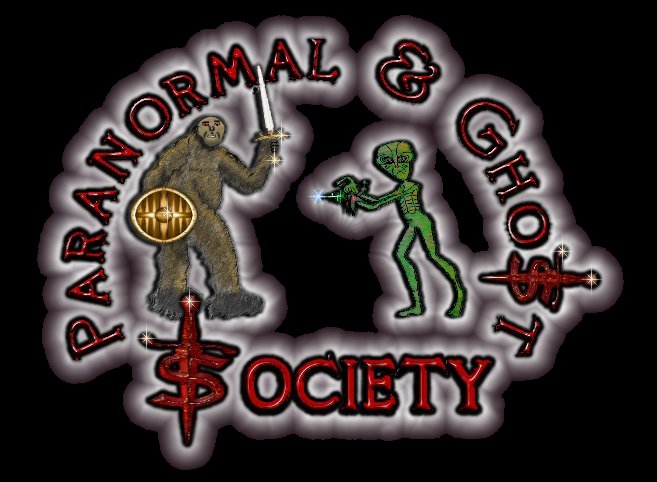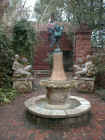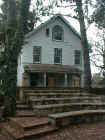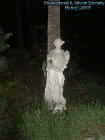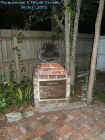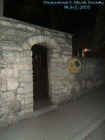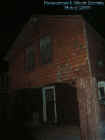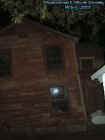|
|
||
|
At one time in 1565 when St. Augustine just started to build up with settlers and structures there was an area where the original site once stood. Since St. Augustine had suffered the wraith of war, pirates, disease, and even fire settlements often were destroyed. The St. Augustine village is a collection of nine colonial homes built over the settlement which said to contain a Spanish Colonial defense line, Hospital, Spanish Cemetery and much more. What happens when you build over a graveyard or settlement? Well very simple the land is haunted therefore when you build on a cemetery the houses on that land most likely will contain those energies. I believe that the Old Village of St. Augustine may be one of the most haunted places. Although there is many different ghost at various historical locations the old village has a very unsettling, eerie, and almost uncomfortable feeling as ghost peak out there curtains at you in the late hours of the night. On the grounds there is many exhibits and markers. For example at one site you can read the 1864 Emancipation Proclamation which freed all the slaves in Florida. Then the general store within the village sells key lime honey, pepper sauce and historical books. Then as you weave in between all these old colonial homes covered in vines many different gardens and courtyards are found where as some statues almost seem alive. Walking down the cobble stone walkways gives you a sense of history here. You can even read the 1572 town plan of St. Augustine. Today the Old Village is surrounded by high walls and a rod iron gate so once you are inside you are pretty much trapped with its ghost. The old village is one city block of historical homes ranging from the time periods of 1790 to 1910. On the site there is an old bandwagon and alot of early pioneer artifacts. One of the buildings tips at an angle but still stands despite its lean. Although this will be a long piece of history I wanted to further below write about each structure found in the old village. Perhaps then you will understand why we chose to investigate this small community based on its rich history. The first house we will talk about is The Prince Murat House built in 1790 to 1815. It is one of the oldest surviving Colonial structures in St. Augustine made out of Coquina. The house was home to Prince Achille Murat the nephew of Napoleon Bonaparte which was said to stay here in 1824 where at the time the Canova family owned it. They also owned most of the block in the 1800s and perhaps took some of these homes and rented them out to various guest. They say that this is where Murat had met with Ralph Waldo Emerson while residing here. In 1941 a museum benefactor named Kenneth Worcester Dow purchased this home to make it a permanent home. He then furnished it with antiques giving the place a very royal look. An author who wrote about this house stated that he did not stay the prince did not stay here long like others theorized despite the fact he was exiled Murat did not live a life in hiding. The
next house is called The Dow House built in 1839 was originally
constructed by the Canova family on St. George Street. The frame
vernacular Florida Territorial Period House was moved in 1905 from its
location to the old village. Mary Hayden was a widow of a wealthy hotel
owner. She built a large Colonial Revival House in place where the Original
Down House sat. Ms. Sarah McKinnon who was a long time resident here
agreed to have life tenancy here and lived to be over 100 years old. Then Mr.
Dow purchased the home in 1941. Then we have another unique structured called The Spear House built around 1899 which was originally a one story structure with a tower attached to it. Then in 1910 a second story was added. Then in 1920 the structure was used as an apartment house. Today the house is used as a museum entrance and visitor center. The fifth house built also in 1899 was constructed by a carpenter and was built out of scrap building supplies. This is what I talked about earlier its the leaning house. The wood is even mismatched here and the reason for its lean is that in the 1940s a hurricane caused a great flood in St. Augustine which knocked it off its foundation. Then in the sixth structure built in 1899 was the Star General Store which at one time was kindergarten then a doll and toy store. Eventually it became a millinery shop then converted into two apartments for women of the De Medicis family in 1921. Today the store is used to by a few rare spices and books for visiting tourist. The seventh structure was the Worcester House built in 1904 and first occupied by a grocer named Juno L. Henry then passed on by his heirs which leased the property to other local residents. The house was divided into two apartments one of the occupants was Kenneth Dow's aunt named Susan Worcester who lived here during the 1950s. The house today is supposedly furnished with antiques from the Edwardian Period. The next house built in 1904 was called The Howells House. It was named after William Dean Howell a very famous inhabitant who was a American Writer and Editor. He stayed here in the winter of 1916 writing about the Prince Murat House. Today the house is used for a library, volunteer center for the museum and administrative offices. The final house in the Old Village and the 9th structure is called The Rose House built in 1910. In 1956 all the way to 1966 an author and rose collector by the name of Jean Gordon rented this house from Mr. Dow. He operated this home as a free Rose Museum. Today tourist can visit here and see collections of antiques from all over the world. I believe they want to recreate a Rose Museum like it once was. So as you can see the old village has alot of history and surely each house perhaps has a ghost story or two related with these structures. Mr. Kenneth Worcester Dow lived in the old village for over 60 years. His first home he purchased was the Murat house and he loved all the other houses nearby so he purchased them all by 1950. He rented many of the houses out as apartments. Dow came from a lumber and real estate family. He took an interest in antiques and owned properties in Massachusetts and internationally adding various pieces to the Old village. In 1989 Mr. Dow donated the historical homes to the city of St. Augustine and his antiques, art, and family heirlooms to the Museum of Arts and Sciences in Daytona Beach. So all in all there is alot of history to the old village and perhaps the reason why its so discomforting to walk around here is because of all the different deaths, historical significances, and events which took place in just one small city block. The houses in the Old Village are so close to one another that at times only a few feet separate them or just a small garden. So come walk with us as we unveil its secrets to you. © By Rick-AngelOfThyNight In accordance with Title 17 U.S.C. Section 107, any copyrighted work in this message is being distributed under fair use without profit or payment to those who have expressed a prior interest in receiving the included information for non-profit research and educational or criticism purposes only. Notwithstanding the provisions of sections 106 and 106A, the fair use of a copyrighted work, including such use by reproduction in copies or phone records or by any other means specified by that section, for purposes such as criticism, comment, news reporting, teaching (including multiple copies for classroom use), scholarship, or research, is not an infringement. Anotherwards a few photos are borrowed we do not make any profit off pictures mainly they are used for historical, criticism, theories and other educational purposes therefore we can use them as long as we do not claim them as our own or get paid for those photos specifically.
|
||
|
|
|
